Back to search results
FIJI SHIPWRECK LANDSCAPE
NEAR WRECK BEACH GELLIBRAND LOWER, CORANGAMITE SHIRE
FIJI SHIPWRECK LANDSCAPE
NEAR WRECK BEACH GELLIBRAND LOWER, CORANGAMITE SHIRE
All information on this page is maintained by Heritage Victoria.
Click below for their website and contact details.
Victorian Heritage Register
-
Add to tour
You must log in to do that.
-
Share
-
Shortlist place
You must log in to do that.
- Download report

2021 gravesite and headstone

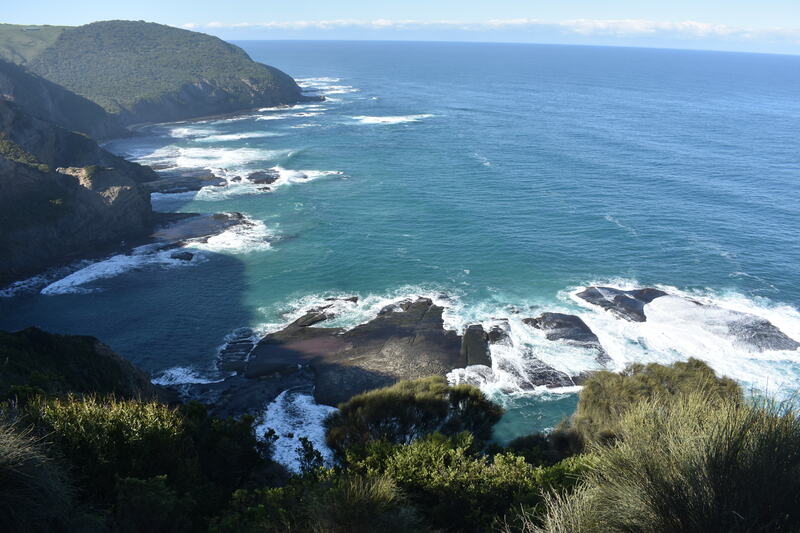

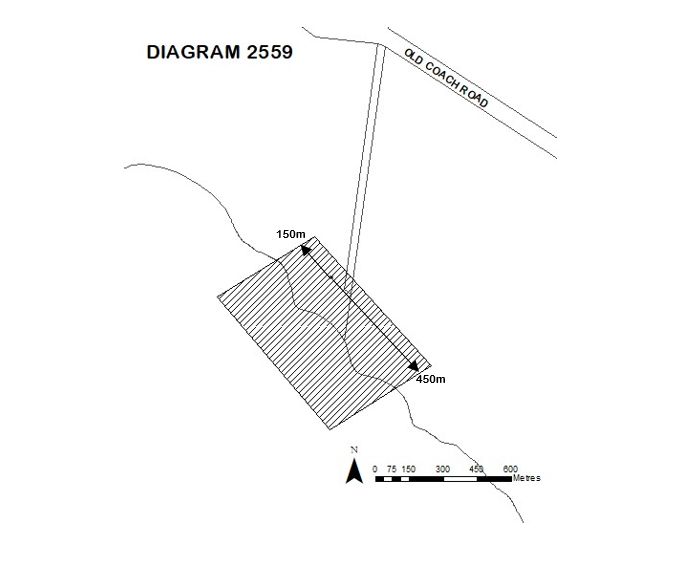
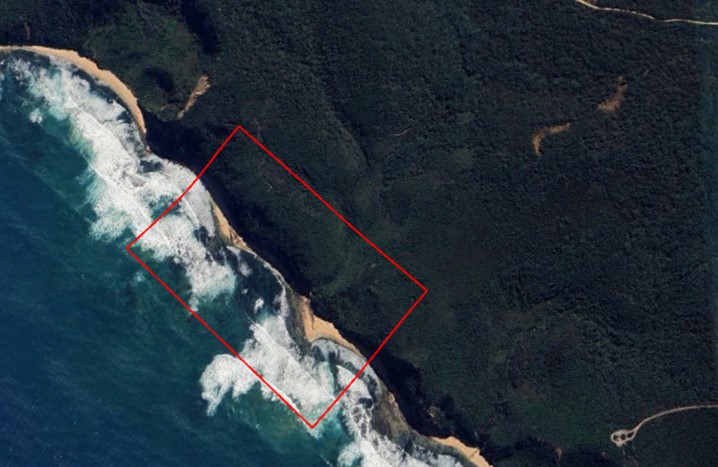
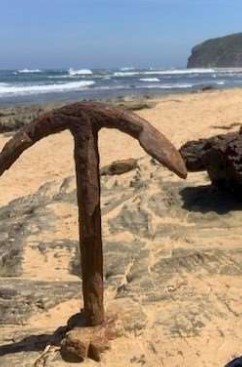
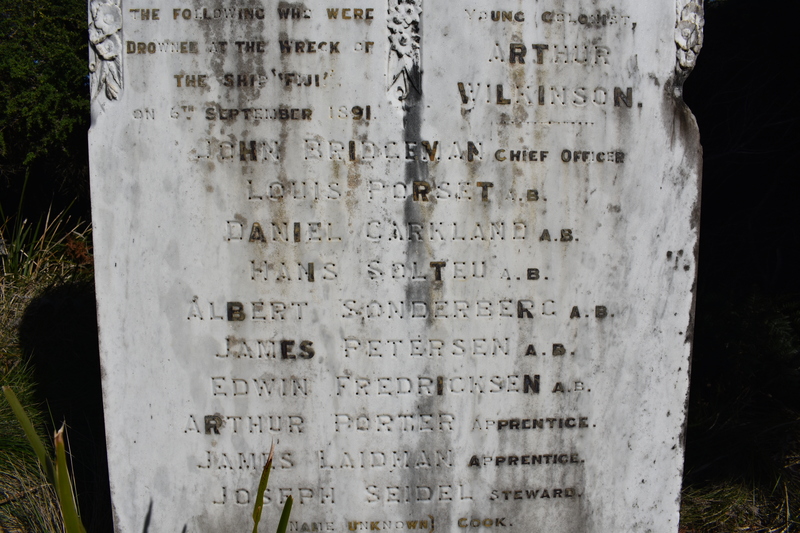
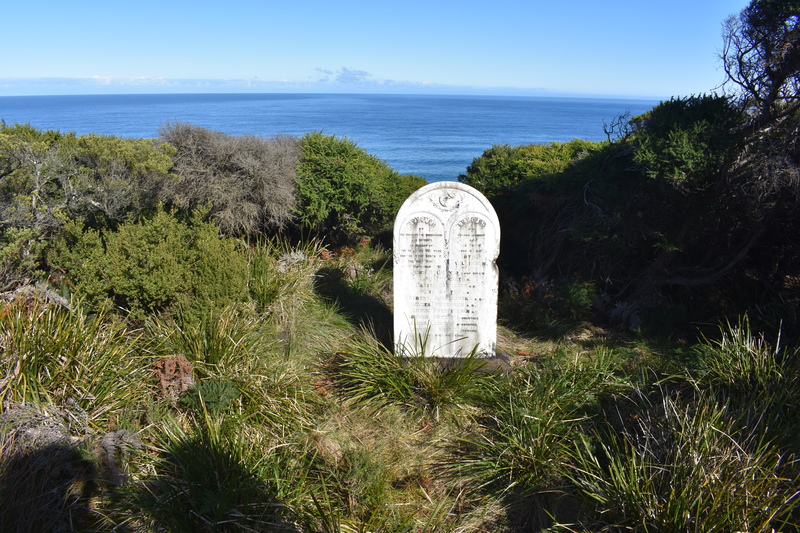
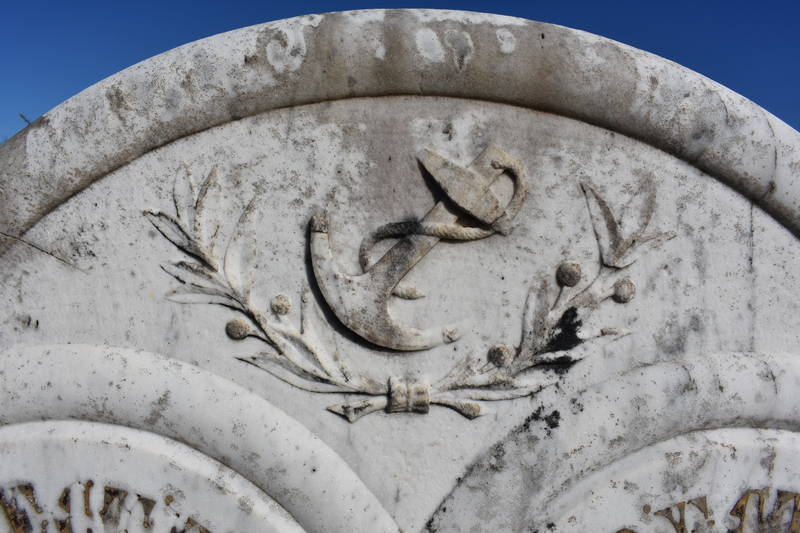
On this page:
Statement of Significance
What is significant?
The Fiji Shipwreck Landscape, being the landscape, seascape and features associated with the wreck of Fiji in 1891 and its aftermath. This includes the wreck site, the beach, the upright anchor monument, the headstone and associated gravesite.
How is it significant?
The Fiji Shipwreck Landscape is of historical significance to the State of Victoria. It satisfies the following criterion for inclusion in the Victorian Heritage Register:
Criterion A
Importance to the course, or pattern, of Victoria’s cultural history.
Criterion B
Possession of uncommon, rare or endangered aspects of Victoria’s cultural history.
Why is it significant?
The Fiji Shipwreck Landscape is historically significant as the site of one of Victoria’s most well-renowned shipwrecks and dramatic maritime rescue attempts. The barque Fiji went ashore early on the morning of 6 September 1891 near Wreck Beach. After many hours clinging to the foundering vessel, a dramatic rescue attempt was made by a rocket crew from Port Campbell. With inadequate equipment and in rough seas, 11 crew members and one rescuer perished. Dramatic scenes from the rescue, including the crew clinging to the bowsprit and the rocket crew on the beach, were captured by a photographer on the shore. The wreck and its aftermath became the subject of intense public interest. The events that led to the wreck and hampered the rescue can be clearly understood and interpreted in the dramatic coastal landscape. A headstone, erected shortly after the event at the location of the wreck and inscribed with the names of those who died in the disaster, is a particularly evocative reminder of the risks faced by sailing ships along the notorious stretch of coastline.
(Criterion A)
The Fiji Shipwreck Landscape is rare within Victoria for its gravesite and headstone. The remote location of these features, near the site of the wreck, assists in understanding the drama that unfolded during the event. Similar gravesites and monuments were more often located in established cemeteries. The headstone is also distinguished by being erected very shortly after the wreck and demonstrates the impact of the disaster and its aftermath.
Show more
Show less
-
-
FIJI SHIPWRECK LANDSCAPE - History
Aboriginal occupation
The Gadubanud people (today represented by the Eastern Maar Aboriginal Corporation) are known to have resided in the coastal area from approximately Painkalac Creek in the east (near present-day Aireys Inlet) to the Gellibrand River in the west for many thousands of years. This area included the rainforests and esturine landscapes of the Otway region as well as the coastal scrub, sheer cliffs and rocky beaches of the area now known as Wreck Beach. There are several Aboriginal cultural heritage places associated with Gadubanud occupation in the vicinity of Wreck Beach. The Gadubanud experienced significant violence and disruption as Europeans encroached into the area from the late 1830s when pastoral activity increased.
The shipwreck coast
The coastline between Warrnambool and Cape Otway brought many ships aground in the nineteenth century. The chief precautionary measure to prevent shipwrecks was construction of a light station at Cape Otway (VHR H1222) in 1846–48. Although Cape Otway Light Station provided a crucial navigational aid, this stretch of coast continued to pose a significant danger to ships. Ships were forced to sail close to the coast as they attempted to ‘thread the eye of the needle’ between Cape Otway and King Island – a distance of approximately 80km. Strong currents, low cloud, high winds, sudden storms, lack of safe anchorages and numerous submerged rock reefs posed a major risk to sailing ships in particular.
The number of wrecks also correlated with the increase in shipping from the mid-nineteenth century. Passenger ships travelling on this route from Europe to Melbourne and beyond increased markedly with the advent of the gold rush from the 1850s and as Victoria’s role in global trade expanded. Shipping disasters impacted the public consciousness and the ‘awful prospect of shipwrecks loomed large in the minds of immigrants’. By number of wrecks the western coastline of Victoria can be considered the most dangerous stretch of coastline in Australia. Well-known wrecks include Schomberg (1855), Loch Ard (1878), Fiji (1891), Newfield (1892) and the Falls of Halladale (1908). Although most lives were lost in the wreck of the Loch Ard, Victoria’s worst maritime disaster, the wreck of Fiji is notable for its significant loss of life and dramatic rescue attempt by residents of the districts of Port Campbell and Princetown.
Fiji
Fiji was a three-masted iron barque built in Belfast by Harland and Wolf. The barque Fiji left Hamburg on 22 May 1891 with a diverse cargo that included spirits, toys, dynamite, pianos, wire, bottles and artists' supplies. The crew numbered 25 and there were no passengers. The Captain was William Vickers.
The wreck of Fiji
The vessel went ashore at 3 am on Sunday 6 September 1891 in squally weather soon after sighting Cape Otway. Attempts were made to launch the boats but they were swamped and dashed to pieces. A young sailor, Julius Gerbauer, successfully made it to shore on a second attempt. A party of land selectors from Port Campbell and Princetown came across the exhausted Gerbauer. The alarm was raised, and a rider dispatched to Camperdown where the closest working telegraph was located.
The rescue
Shipwreck rescues were extremely difficult along this stretch of coast. Much of the coast was inaccessible via lifeboat, and steep cliffs and rough seas hampered recovery of survivors and of the bodies of those who had died. There were 12 lives lost in the Fiji wreck event – 11 of the crew and one rescuer. The first crew member to perish was Daniel Carckland, who attempted to swim from the ship to land but was swept away by the surf. The second death was the rescuer Arthur Wilkinson, who swam out to assist the struggling crewman Johann Punken swimming to shore, but both had to abandon their target and head to the ship instead, where Wilkinson was dragged out, possibly unconscious, and eventually went down with the breaking ship. James Laidman was hauling himself across the life-line to shore when he was swept away, and nine more of the crew died similarly.
After the wreck of Loch Ard, the Department of Ports and Habours made available rocket equipment and lifesaving apparatus at Port Campbell and Princetown. ‘Rockets’ were a device by which a line could be shot out from shore to a wrecked boat, and survivors hauled ashore. When news of the wreck of Fiji reached Port Campbell, rocket equipment was dispatched but arrived incomplete at Wreck Beach. Although a rocket managed to attach a light line to the ship, the heavy rope and bosuns chair required for people to make it to shore safely was not amongst the rocket equipment. Ten men drowned as they attempted to make it to shore via the light line. A lifeboat had also set out from Warrnambool but due to the distance and adverse conditions turned back. Events of the dramatic rescue were captured by photographer James Jordan on the shore. He recorded the striking photograph of crew members clinging to the bowsprit awaiting rescue.
Some local men displayed great bravery during the attempted rescue, including a Mr William Robe, who removed boots and clothes and waded into the waves to try to grab the struggling sailors who had plunged off the feeble line from the ship into the surf. Some of the crew were washed away and drowned, but some owed their lives to the bravery of the local men. Upon reaching shore, the victims in their undergarments were massaged back into some measure of relative comfort, plied with brandy as the prevailing life-restorer, wrapped in blankets, edged up to fires lit on the beach for warmth, and when stable enough to be moved, assisted up the cliff-top to waiting horses with buggies, which ferried them to the remote Rivernook guest-house owned by John and Emily Evans. In addition to Robe, those active in the rescue included M. J. Dunne, Fenelon Mott, Peter Carmody, Edwin Vinge, Rev. T. J. Jones, a Mr Tregea, R. H. Henderson, Hugh Cameron, Arthur Robertson, Martin McMahon and Evans, together with a Constable Jones.
This bravery tended to be under-recognised, obscured in the serious controversy as to whether a vital heavier rope had not been taken to the beach prior to the attempts by the sailors to reach the shore. Setting the rope matter to one side, the heroic efforts from men who would probably have had limited swimming capability, cannot be denied, and should have been more warmly applauded by the Melbourne-based press at the time. Belated nominations for acts of bravery would not be out of place.
The bodies recovered by Monday night were of James Laidman, Arthur Porter, Louis Polset, Joseph Siedel, the unnamed cook, Albert Sonderberg and Edwin Frederiksen. Arthur Wilkinson’s body was also recovered. The bodies remained on the back of the beach until Wednesday waiting for Justice of the Peace, Dr S. A Ewing, to undertake the formal inquiry and sign for their burial. Survivors were taken to Rivernook in Princetown where they stayed in the care of the Evans family.
The deaths precipitated critical comment in the press over the lack of prompt action and inadequate lifesaving apparatus. While the heroism of Wilkinson was celebrated, other news items appeared claiming drunk and disorderly behaviour by plunderers amongst the corpses and wreckage on the beach. The controversy reached parliament with a Court of Marine Inquiry into the cause of the wreck, discussions in the Victorian Legislative Assembly regarding mysterious currents that may have contributed to the wrecking event, and discussions in the Upper House of the Victorian Parliament about increasing life-saving appliances along the coastline between Queenscliff and Warrnambool due to six wrecks in six months.
Burial
Only seven bodies of those who had perished were recovered. Coffins were made from the wreck timbers and the men buried on the cliff top above the wreck. It was initially proposed to bury them at the Loch Ard cemetery, about 16km north-west along the coast, but given their partial decomposition the attending doctor, Dr. Ewing, instructed that the bodies be buried on the cliffs overlooking the disaster. The body of Arthur Wilkinson was to be taken to Geelong.
At that time, the cliffs looked markedly different with only short grasses rather than the tall scrub today. Even so, making the coffins, hauling the bodies up the cliffs and digging the graves required considerable effort. Ropes were attached to a post on the top of the cliff and to a spar of the shipwreck on the beach. Each body was enclosed in boards, attached to block and tackle, and hauled up to the top of the cliff. The work was not finished until late Wednesday evening.
Reverend Mr. Jennison officiated at the burial on Thursday morning. The ceremony was performed with the involvement of the surviving sailors.
Headstone and fence
The community of Geelong raised funds for a funeral and memorial for Arthur Wilkinson. The Warrnambool district community raised funds for the survivors and widows of the deceased. It was later decided to arrange for a monument to be erected on the clifftop where the bodies were buried.
The monument was created by Warrnambool stonemasons Wooles and Carpenter and positioned on the weekend of 27-28 March, 1892.
Money was collected amongst the local community to install a white picket fence around the gravesite and this was likely erected soon after the memorial was in position. Sometime after 1901, a fire completely destroyed the fence.
Events following the shipwreck
The deaths of the crew and Wilkinson added to the intensity of press reports across Victoria. Certain parts of the Fiji story particularly captured the attention of newspapers including:
• The bravery of crew member, Julius Gebauhr, who successfully swam to shore for help, and the bravery of the rescuers on shore who risked their own lives by entering the water and assisting the struggling crew ashore.
• The heroic death of rescuer Arthur Wilkinson who attempted to assist a crew member who was trying to swim to shore.
• The failure of the rocket apparatus, a life-saving system that created a rope connection between the shipwreck and the shore to carry those stranded on a wreck to safety.
• The reported pillage of the washed-up cargo, including alcohol, which was sensationalised in newspapers with references to drunken debauchery while bodies remained on the beach.
• The Court of Marine Inquiry investigation into the matter which found Captain Vickers guilty of gross negligence and suspended his licence for 12 months and fined him £25.
Anchor monument
The anchor for the monument was recovered from the Fiji wreck site and cemented upside down in the rocky reef at the base of the cliff. It was erected in about 1970 by members of the Warrnambool Skindivers Club. The anchor was apparently found near the hull of the wreck and dragged 150-200 metres onto the shore.
It is implied that this monument was erected in commemoration to the wrecking event and the 12 lives lost, but also to the shipwreck site itself which continues to be recreationally important as one of Victoria’s most spectacular historic shipwreck dives.
Re-finding the headstone
After World War II, taller scrub of ti-trees, sheoaks, correa and other coastal vegetation grew up in the area, obscuring the headstone’s location. Although some knew of its existence, it was extremely difficult to access. In 1999 members of the community with an interest in the history of the wreck located its position. In the following decade, Parks Victoria created a small clearing around the headstone. Parks Victoria have now established a walking path connecting the site with the nearby Devils Kitchen campground. More recently a picket fence has been erected around the headstone.
Selected bibliography
Online resources
Australasian Underwater Cultural Heritage Database.
Victoria Archaeological Survey, Fiji Dive Information Sheet.
Books
Anderson, Ross and Cahir, Anne., Surf Coast Wrecks: Historic Shipwrecks between Point Lonsdale and Cape Otway 1853-1940, Heritage Victoria, 2003.
Foster, Leonie., The Wild Coast Wrecks, Heritage Victoria, 1996.
McLean, Alan., Mystery at Moonlight Head: The Fiji shipwreck disaster of 1891, 2018.
Russell, Roslyn., High Seas and High Teas: Voyaging to Australia, NLA Publishing.
Consultation and interviews
Thank you to Alan McLean for his input into this recommendation.
Keywords
landscape; seascape; cultural landscape; maritime disaster; shipwreck; burial; headstone; grave; coast.
FIJI SHIPWRECK LANDSCAPE - Permit Exemptions
General Exemptions:General exemptions apply to all places and objects included in the Victorian Heritage Register (VHR). General exemptions have been designed to allow everyday activities, maintenance and changes to your property, which don’t harm its cultural heritage significance, to proceed without the need to obtain approvals under the Heritage Act 2017.Places of worship: In some circumstances, you can alter a place of worship to accommodate religious practices without a permit, but you must notify the Executive Director of Heritage Victoria before you start the works or activities at least 20 business days before the works or activities are to commence.Subdivision/consolidation: Permit exemptions exist for some subdivisions and consolidations. If the subdivision or consolidation is in accordance with a planning permit granted under Part 4 of the Planning and Environment Act 1987 and the application for the planning permit was referred to the Executive Director of Heritage Victoria as a determining referral authority, a permit is not required.Specific exemptions may also apply to your registered place or object. If applicable, these are listed below. Specific exemptions are tailored to the conservation and management needs of an individual registered place or object and set out works and activities that are exempt from the requirements of a permit. Specific exemptions prevail if they conflict with general exemptions. Find out more about heritage permit exemptions here.Specific Exemptions:The works and activities below are not considered to cause harm to the cultural heritage significance of the Fiji Shipwreck Landscape subject to the following guidelines and conditions:Guidelines
1. Where there is an inconsistency between permit exemptions specific to the registered place or object (‘specific exemptions’) established in accordance with either section 49(3) or section 92(3) of the Act and general exemptions established in accordance with section 92(1) of the Act specific exemptions will prevail to the extent of any inconsistency.
2. In specific exemptions, words have the same meaning as in the Act, unless otherwise indicated. Where there is an inconsistency between specific exemptions and the Act, the Act will prevail to the extent of any inconsistency.
3. Nothing in specific exemptions obviates the responsibility of a proponent to obtain the consent of the owner of the registered place or object, or if the registered place or object is situated on Crown Land the land manager as defined in the Crown Land (Reserves) Act 1978, prior to undertaking works or activities in accordance with specific exemptions.
4. If a Cultural Heritage Management Plan in accordance with the Aboriginal Heritage Act 2006 is required for works covered by specific exemptions, specific exemptions will apply only if the Cultural Heritage Management Plan has been approved prior to works or activities commencing. Where there is an inconsistency between specific exemptions and a Cultural Heritage Management Plan for the relevant works and activities, Heritage Victoria must be contacted for advice on the appropriate approval pathway.
5. Specific exemptions do not constitute approvals, authorisations or exemptions under any other legislation, Local Government, State Government or Commonwealth Government requirements, including but not limited to the Planning and Environment Act 1987, the Aboriginal Heritage Act 2006, and the Environment Protection and Biodiversity Conservation Act 1999 (Cth). Nothing in this declaration exempts owners or their agents from the responsibility to obtain relevant planning, building or environmental approvals from the responsible authority where applicable.
6. Care should be taken when working with heritage buildings and objects, as historic fabric may contain dangerous and poisonous materials (for example lead paint and asbestos). Appropriate personal protective equipment should be worn at all times. If you are unsure, seek advice from a qualified heritage architect, heritage consultant or local Council heritage advisor.
7. The presence of unsafe materials (for example asbestos, lead paint etc) at a registered place or object does not automatically exempt remedial works or activities in accordance with this category. Approvals under Part 5 of the Act must be obtained to undertake works or activities that are not expressly exempted by the below specific exemptions.
8. All works should be informed by a Conservation Management Plan prepared for the place or object. The Executive Director is not bound by any Conservation Management Plan and permits still must be obtained for works suggested in any Conservation Management Plan.
Conditions
1. All works or activities permitted under specific exemptions must be planned and carried out in a manner which prevents harm to the registered place or object.?Harm includes moving, removing or damaging any part of the registered place or object that contributes to its cultural heritage significance.
2. If during the carrying out of works or activities in accordance with specific exemptions original or previously hidden or inaccessible details of the registered place are revealed relating to its cultural heritage significance, including but not limited to historical archaeological remains, such as features, deposits or artefacts, then works must cease and Heritage Victoria notified as soon as possible.
3. If during the carrying out of works or activities in accordance with specific exemptions any Aboriginal cultural heritage is discovered or exposed at any time, all works must cease and the Secretary (as defined in the Aboriginal Heritage Act 2006) must be contacted immediately to ascertain requirements under the Aboriginal Heritage Act 2006.
4. If during the carrying out of works or activities in accordance with specific exemptions any munitions or other potentially explosive artefacts are discovered, Victoria Police is to be immediately alerted and the site is to be immediately cleared of all personnel.
5. If during the carrying out of works or activities in accordance with specific exemptions any suspected human remains are found the works or activities must cease. The remains must be left in place and protected from harm or damage. Victoria Police and the State Coroner’s Office must be notified immediately. If there are reasonable grounds to believe that the remains are Aboriginal, the State Emergency Control Centre must be immediately notified on 1300 888 544, and, as required under s.17(3)(b) of the Aboriginal Heritage Act 2006, all details about the location and nature of the human remains must be provided to the Secretary (as defined in the Aboriginal Heritage Act 2006).
Exempt works and activities
1. All processes of land, water and animal management that are permitted under the Parks Victoria Act 2018 and associated regulations, policies and guidelines issued by Parks Victoria.
2. Construction and maintenance of walking tracks and associated infrastructure such as viewing platforms, seating and boardwalks.
3. Installation of Parks Victoria directional, interpretative and visitor information signage provided it is not within 3 metres of the headstone and does not obscure views of the headstone or out to sea.
4. Installation of landslip and erosion control measures.
5. Fire suppression and firefighting activities such as fuel reduction burns and fire control line construction, provided the headstone is protected.
6. Replacement of the picket fence surrounding the headstone installed in 2023, provided the replacement fence is in the same location, uses the same materials and is not greater in height.
FIJI SHIPWRECK LANDSCAPE - Permit Exemption Policy
The extent of registration for the place includes the site of the wreck of Fiji. The wreck of Fiji itself is already included in the VHR as S259. It is not the intent of this registration to duplicate the existing registration of the wreck itself. The wreck is protected by the Shipwreck provisions of the Heritage Act and the Underwater Cultural Heritage Act 2018 (Cth). Although it is included in the extent of registration for the Fiji Shipwreck Landscape, the wreck should continue to be managed via the existing provisions.
-
-
-
-
-
FIJI SHIPWRECK LANDSCAPE
 Victorian Heritage Register H2459
Victorian Heritage Register H2459
-
"1890"
 Yarra City
Yarra City -
'BRAESIDE'
 Boroondara City
Boroondara City -
'ELAINE'
 Boroondara City
Boroondara City
-
-










